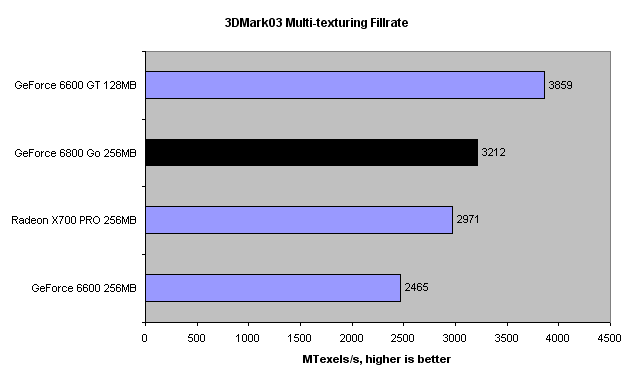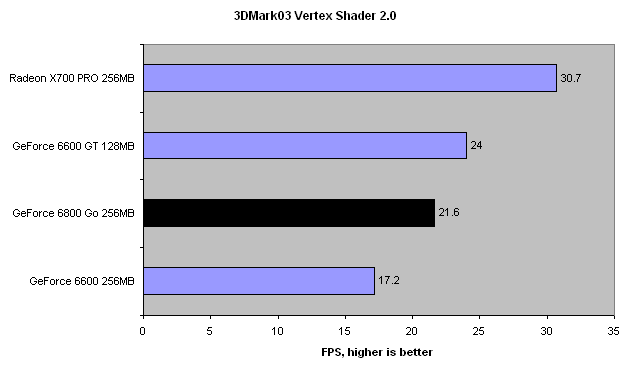Graphics testing, fillrate and shading power
With a very limited timeframe for testing and evaluating NVIDIA's GeForce 6800 Go GPU and MV's Ixius 3.6, we were unable to get our grubby mitts on a laptop equipped with a Mobility Radeon 9800 256MB card in time. Therefore I've decided to directly compare the GeForce 6800 Go GPU's performance to current midrange desktop cards in the form of NVIDIA's GeForce 6600 256MB, GeForce 6600 GT 128MB and ATI's Radeon X700 PRO 256MB, respectively. All three cards were run on our desktop 3.6GHz i925X system detailed a few pages back.So, just to recap, we're looking at:
MV Ixius 3.6 desktop-replacement laptop with GeForce 6800 Go, PCI-Express X16, 256MB, 275/600
HEXUS 3.6GHz LGA775 desktop system with GeForce 6600, PCI-Express, 256MB, 325/555, GeForce 6600 GT, PCI-Express, 128MB, 500/1000, and Radeon X700 PRO, PCI-Express, 256MB, 425/864
So we're looking at three modern desktop video cards with higher core speeds but with 'only' 8 rendering pipelines and 128-bit memory interfaces. The comparison will be interesting. GeForce 6800 Go was hooked up to an external monitor for testing at different resolutions.
As always, a look at fillrate and shading power first.

The '6800 Go's 275MHz core looks out of place next to an X700 PRO's 425MHz and 6600 GT's 500MHz but it's nicely augmented by a 12-pipe rendering setup. Expect ODMs to ramp up NV41M clocks in the near future, too.

A lack of comparative core clock speed somewhat counts against it here. Still, it's not far behind a 500MHz 6600 GT.

Pixel Shader 2.0 performance is also impressive. A mobile part that's mixing it with established £150+ desktop boards. What the above three graphs don't highlight is the Go's memory bandwidth advantage over the others. I'm glad NVIDIA opted to base its newest premium mobile part on GeForce 6800 and not GeForce 6600 architecture.









